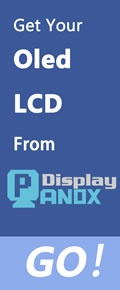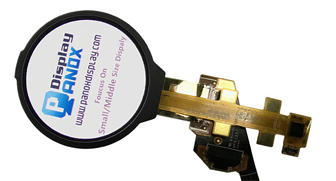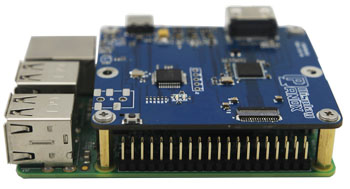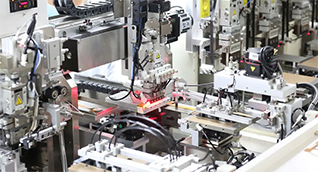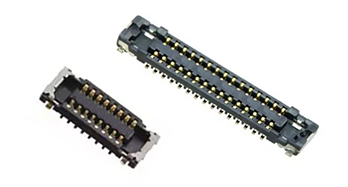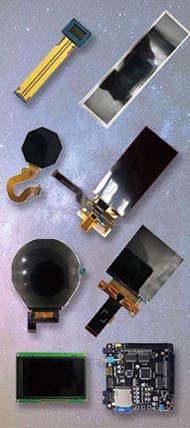An industrial display panel is a ruggedized screen built to perform reliably in harsh environments such as factories, food processing plants, and military settings. Designed for durability, high brightness, and environmental resistance, these panels serve as essential human-machine interfaces (HMIs) for industrial process control and monitoring. Also check: Micro OLED
What Are the Key Features of an Industrial Display Panel?
Industrial display panels are engineered to endure tough conditions. They feature rugged construction using materials like aluminum and stainless steel to withstand shock and vibration. High Ingress Protection (IP) ratings, such as IP65 or IP69K, protect against dust and liquids. These panels operate in wide temperature ranges and often include high brightness levels (1000+ nits) and anti-glare coatings for visibility under direct sunlight. Optical bonding enhances durability and display quality, while fanless designs reduce dust ingress and improve reliability.
Which Types of Industrial Display Panels Are Available?
There are various types tailored to specific industrial needs:
-
Industrial Monitors: Standalone units connecting to external computers, available with or without touchscreens.
-
Industrial Panel PCs: All-in-one solutions combining rugged touchscreen displays with embedded processors, ideal for HMIs.
-
Open Frame Monitors: Frame-less monitors designed for custom enclosures or kiosks.
-
Panel Mount Monitors: Built to mount flush into control cabinet doors for a clean interface.
-
Washdown Monitors: Engineered for hygiene-sensitive industries like food processing, with high IP ratings for resistance to harsh cleaning.
How Do Industrial Display Panels Serve Different Applications?
Industrial panels are vital in sectors where consumer displays fail:
-
Manufacturing and Automation: Process control and robotic management.
-
Food and Beverage: Cleanroom-compatible stainless steel and washdown-safe panels.
-
Transportation and Logistics: Fleet and inventory management in vehicles and warehouses.
-
Energy and Utilities: Monitoring in power plants, oil rigs, and water treatment.
-
Healthcare: Integrated into medical diagnostics, patient monitoring, and pharmaceutical manufacturing.
What Should Be Considered When Choosing an Industrial Display Panel?
Key factors include:
-
Environmental Conditions: Assess exposure to dust, moisture, temperature extremes, and vibrations.
-
Touch Technology: Choose resistive touchscreens for glove use or projected capacitive (PCAP) for precision multi-touch.
-
Performance Needs: Decide between simple monitors or fully integrated panel PCs based on application complexity.
-
Screen Size and Brightness: Match size to data display needs; select high brightness for well-lit environments.
-
Mounting Options: Ensure compatibility with panel mount, VESA, open frame, or specialized mounts.
How Does Touch Technology Impact Industrial Display Use?
Touchscreen technology can dramatically affect usability. Resistive screens work through pressure and are ideal for operators wearing gloves. Capacitive touchscreens respond to electrical conductivity and support multi-touch, preferred for high-precision interaction. Some industrial monitors provide infrared or optical imaging touch options, balancing durability and sensitivity for diverse tasks.
Why Is Durability Crucial in Industrial Display Panels?
Durability ensures long-term operation despite physical impacts, dust, moisture, and temperature extremes. Many industrial panels use metals like aluminum and stainless steel for chassis strength. High IP ratings and optical bonding protect internal components. Fanless designs prevent dust accumulation, enhancing reliability. Durability reduces downtime and maintenance costs, critical for continuous industrial production.
What Are the Advantages of High Brightness and Optical Bonding?
High brightness levels (over 1000 nits) enable clear visibility in direct sunlight or bright factory lighting. Anti-glare coatings reduce reflections for better readability. Optical bonding eliminates air gaps between the display and cover glass, increasing contrast, preventing condensation, and boosting screen robustness against shocks.
How Does Panox Display Support Industrial Display Needs?
Panox Display specializes in supplying industrial LCD and OLED screens with rugged designs suited to harsh environments. Partnering with top manufacturers like AUO, BOE, and Samsung, Panox offers custom and standard panels with features such as optical bonding and high IP ratings. Their solutions cater to industries including military, automotive, and wearable tech. Panox supports OEM customers needing lower MOQs and high-quality displays globally.
What Mounting Options Are Available for Industrial Display Panels?
Industrial panels come with diverse mounting styles:
-
Panel Mount: Fits flush in control cabinet doors for a sleek profile.
-
VESA Mount: Offers standardized mounting for flexible installation.
-
Open Frame: Frame-less, ideal for integration into custom assemblies.
-
Bracket Mount: Secures the panel in specific industrial machinery.
Choosing the right mount depends on available space and installation needs.
How to Maintain and Extend the Life of Industrial Display Panels?
Proper maintenance involves regular cleaning with appropriate agents (especially for washdown-rated panels), avoiding exposure beyond rated temperature ranges, and inspecting seals and connectors. Using fanless designs and durable materials helps reduce dust and moisture ingress. Regular software and hardware checks ensure ongoing performance.
Panox Display Expert Views
"Industrial display panels represent a critical interface between human operators and industrial processes. At Panox Display, we emphasize not only robust hardware construction but also advanced display technologies like optical bonding and high-brightness LED backlighting, ensuring clarity and longevity in harsh environments. Our commitment to customization and supply flexibility uniquely supports engineers and businesses worldwide who demand reliable, cutting-edge display solutions for their complex industrial applications."
Conclusion
Choosing the right industrial display panel requires understanding key factors like environmental conditions, durability, touch technology, and mounting preferences. High-brightness, rugged construction, and IP-rated protection ensure reliable operation in challenging industrial settings. Leveraging a trusted partner like Panox Display can deliver customized, quality display panels tailored to demanding applications, maximizing uptime and operational efficiency.
Frequently Asked Questions
What is an industrial display panel used for?
They serve as rugged screens in tough environments for machine monitoring, process control, and data visualization.
Can industrial panels work in extreme temperatures?
Yes, many panels operate reliably across wide temperature ranges from freezing to high heat.
What touch technologies do industrial displays offer?
Common types include resistive for glove use and capacitive (PCAP) for precise multi-touch capabilities.
Why is IP rating important?
It defines protection against dust and liquids, critical for durability in harsh industrial environments.
How does Panox Display stand out in industrial display solutions?
Panox offers OEM, custom displays with quality sourced from top manufacturers, supporting global industrial applications.









